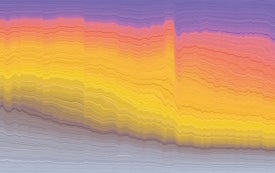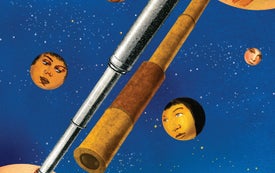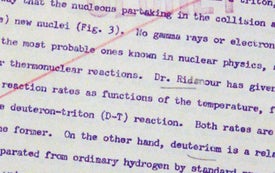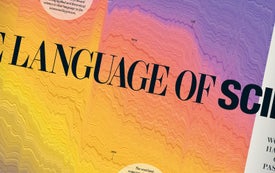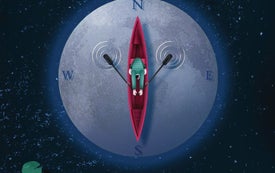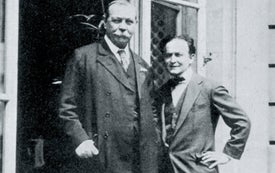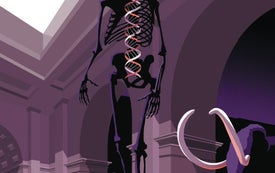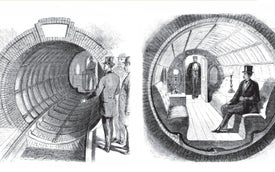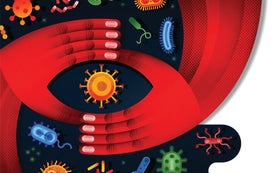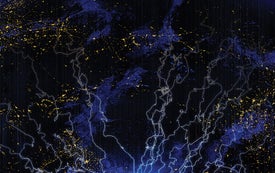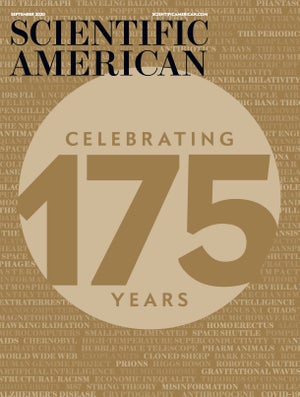
You are currently logged out. Please log in to download the issue PDF.
Features
The Language of Science
How the words we use have evolved over the past 175 years
Reckoning with Our Mistakes
Some of the cringiest articles in Scientific American’s history reveal bigger questions about scientific authority
How an Article about the H-Bomb Landed Scientific American in the Middle of the Red Scare
At one time this magazine tangled with the FBI, the Atomic Energy Commission and Joseph McCarthy
How to Turn 175 Years of Words in Scientific American into an Image
A data designer explains the art and science of analyzing and charting text from 5,107 issues of this magazine
How Astronomers Revolutionized Our View of the Cosmos
The universe turns out to be much bigger and weirder than anyone thought
When Scientific American Made M. C. Escher Famous
In the 1960s Martin Gardner helped to turn the artist M. C. Escher into a sensation
Welcome to 175 Years of Discovery
An orientation to our special issue
Scientific American vs. the Supernatural
This magazine launched a contest to prove, or disprove, the existence of ghosts
How Scientists Discovered the Staggering Complexity of Human Evolution
Darwin would be delighted by the story his successors have revealed
The First Subway in New York City Was a Cylindrical Car Pushed by Air
Scientific American editor Alfred Ely Beach revealed the secretly built wonder in 1870
In the Fight against Infectious Disease, Social Changes Are the New Medicine
Vaccines and drugs drove a century of progress, but today’s contagions thrive on inequality
Unlimited Information Is Transforming Society
Technology is blurring the lines between consumers and producers, amateurs and professionals, and laypeople and experts. We’re just starting to understand the implications
What Ancient Mass Extinctions Tell Us about the Future
Carbon dioxide has done plenty of damage before
